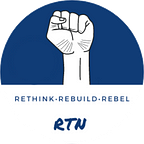Modelling Thinking
As a teacher, you’re probably familiar with “modelling”.
No, not throwing on your sexiest skivvies and strutting your stuff on the teacher’s desk…
Modelling is showing the students what you want them to do by doing it yourself.
This beats just giving instructions because there is a visual and kinaesthetic element to it that means students will be able to follow your demo much easier than following spoken instructions.
For example, they might not understand some of the words in your instructions, but your model will help them fill in those understanding gaps.
But, like I said, you probably already know this. Teachers model activities all the time.
However… Have you ever modelled your thinking for your students?
Modelling Thinking is showing the students your thinking process by demonstrating it practically and aloud right there in front of the class.
Next time you want to show them a text example — perhaps you’re teaching essays or emails — don’t just put the finished product on the screen and say, I want you to write something like this.
Instead, start with a blank document, and right there in front of them, write an email yourself. Let them see you pause to think about the next line. Let them see you make mistakes and erase them. Let them see you replace weak words with better ones. Let them see you scroll back up and reformat a paragraph.
When we show students the finished product, we’re modelling perfection. But that is not a realistic model for them to reproduce. There was a whole process that led to the final product, and it is the process that the students really need to reproduce; they can’t just cough up a finished email!
The same can be done when reading and when listening to audio tracks or videos. Pause the track, ask a mental question out loud, take down some notes, then keep playing. Show your students how you consume content with the intent of learning so that they know what that looks like.
Remember, the things that you do every day are easy for you, they come naturally. But the same is not true for your students. So give them some models they can really work with…
